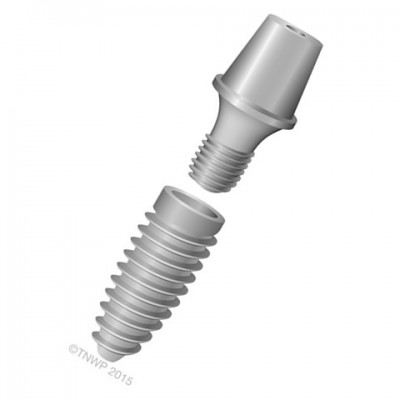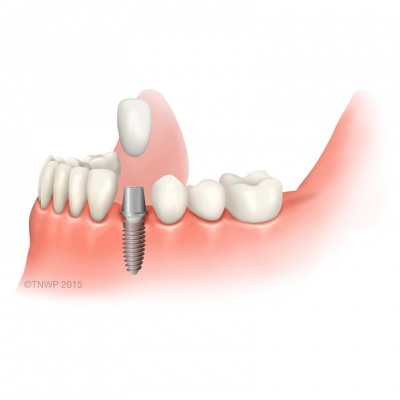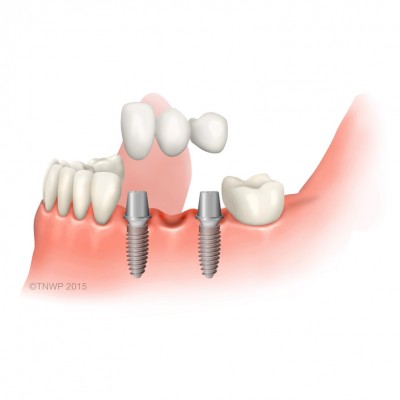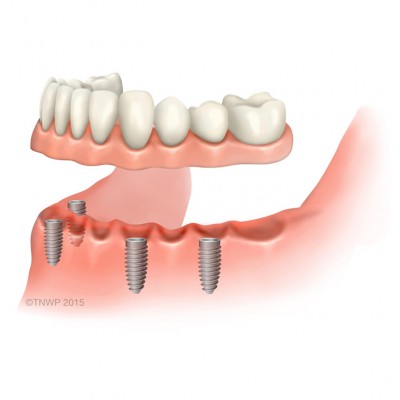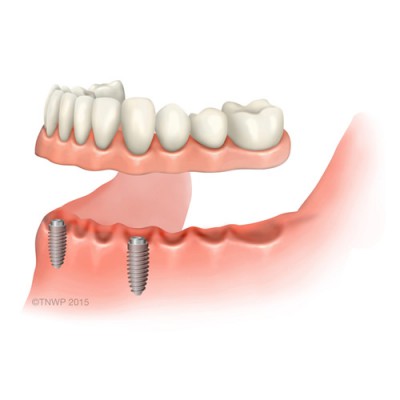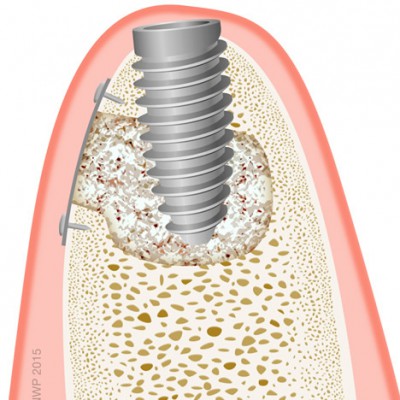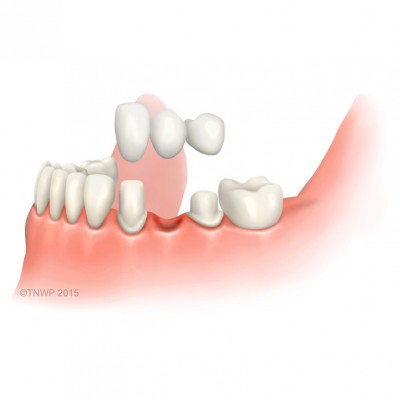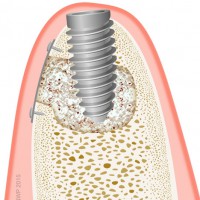
Bone grafting for dental implant treatment
The bone in a jaw shrinks, if it is not in regular use. This is a natural process called resorption. Resorption shrinkage happens when a gap is left after a tooth has been lost. It also occurs with natural ageing and under a conventional denture. The pressure of a denture on the gums during chewing reduces the blood supply which can increase the rate of bone loss.
During the initial clinical assessment, the dentist will determine whether the patient has enough bone for implant treatment. But, insufficient bone volume or quality to support dental implants is not necessarily a problem nowadays.
Bone grafting can be used to provide a firm base to fix an implant or implants. Bone grafts can be harvested from elsewhere in the patient’s own body. But, other types of bone augmentation material can be also used. This can be synthetic, animal or human in origin.
Types of bone grafting surgery associated with dental implant treatment include:
- Autogenous bone graft
- Bone ring graft
- Block bone graft
- Alveolar ridge expansion
- Guided bone regeneration
- Bone augmentation (synthetic or bovine)
- Sinus lift
- Sinus augmentation
Bone grafting procedures must be carried out by a competent dental practitioner or oral surgeon. If you think you might need a bone graft, in conjunction with implant treatment, consult a dentist.
Page compiled with assistance from Dr Sharad Patel



